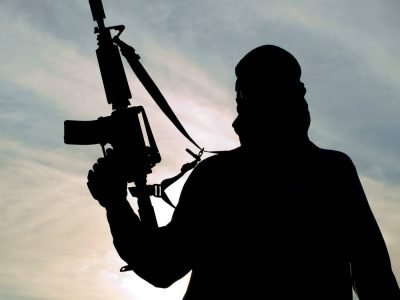
How the Islamic State is restructuring and repositioning?
Since the death of Abu Bakr al-Baghdadi, the leader of Islamic State of Iraq and Syria (ISIS), in October 2019 and the appointment of Abu Ibrahim al-Hashimi al-Qurashi as his successor, ISIS has begun the reorganization of its internal affairs with the goal of regrouping and drawing up a strategy for it to return, while working to ensure that the foundations of ISIS and its new strategy for action are suitable for its current situation.
ISIS is changing the supervision of its operations. Since the death of al-Baghdadi in October last year, ISIS has purposefully undertaken far-reaching changes to the emirs and teams of some of its offices, most importantly in the public safety office, the media office and finance office.
In October, after the assassination of al-Baghdadi, ISIS arrested prominent figures within the public safety office after confirming that information from the office management was indirectly leaked to the Guardians of Religion Organization, which is located in Idlib governorate, contributing to the discovery of al-Baghdadi’s location and his killing.
According to a member of the security leadership within ISIS, the changes within the public safety office include dismissal and investigation of all supervisors of the office’s operations. They also include appointing new management, with the aim of alleviating the feeling of anger within ISIS due to the previous management’s responsibility for al-Baghdadi’s death.
The changes within the public safety office also include the establishment of a services and information office to act as a higher authority than the public safety office and as a supervisor of the work of the latter. Followers likened the new office to being similar to an intelligence service.
During the coming period, the security strategy of ISIS depends upon its return to the secrecy which it relied upon before the announcement of the ‘caliphate’ in 2014. This explains the concealment of the identity of its new leader, Abu Ibrahim al-Qurashi.
The ISIS press office also faces an overhaul by the new ISIS leadership, especially after the decline in its work since the end of its military wing in 2018 and the killing of most of its workers. ISIS seeks to train media personnel capable of creating media content to attract new members to ISIS, particularly foreigners.
One of the most important tasks for which ISIS wants to improve its media apparatus is to wage information warfare against Al-Qaeda after the gap has widened between them, particularly as ISIS accuses Al-Qaeda of being behind the information leak that contributed to al-Baghdadi’s location being revealed and his subsequent killing.
The same ISIS source says that changes also relate to the financial office, which faces the monumental task of consolidating the group’s finances, which are currently in the control of a subset of individual leaders. The central ISIS leadership fears their greed and that they could flee with its money or separate and create new independent military organizations, which happened previously after the killing of the first founders of ISIS, Abu Musab al-Zarqawi and Abu Hamza al-Muhajir.
The new ISIS leadership is trying to follow a military policy appropriate to the circumstances of the new phase it is facing, especially in its traditional areas of presence in Syria and Iraq. This strategy differs between regions controlled by the Syrian and Iraqi regimes and regions where the Syrian Democratic Forces are present.
In regions where the Syrian regime and Iraqi government are present, ISIS maintains a clearly defined military presence, stationed in regular groups in the western desert of al-Anbar and the central Syrian desert. Its fighters move between the two sides of the Syria–Iraq border on an ongoing basis in an effort to realign its forces and recruit more fighters to make up for a shortage of manpower.
Current ISIS military operations are taking the form of guerrilla warfare and hit-and-run tactics, moving away from continuous attacks due to its lack of capacity. Likewise, ISIS avoids the establishment of continuously controlled areas in cities or their hinterlands in order to protect itself from becoming a target.
In regions controlled by the Syrian Democratic Forces, ISIS avoids having an organizational presence on the ground because of the international coalition against ISIS and its aircraft that operate in the area. Instead, ISIS depends on covert cells to conduct conventional asymmetrical operations, such as assassinations and the detonation of bombs targeting enemy militants.
In light of its successive defeats – the last of which was the killing of its leader, al-Baghdadi, and its official spokesperson Abul-Hasan al-Muhajir – ISIS seeks to create new theatres of operation in which to test its strength, redeploy its capabilities and assert its presence.
Its plan to redeploy capabilities requires locations further afield than its central points in Syria and Iraq, which are facing domestic and international security pressure. This obliges ISIS to choose new operational stations, often within the scope of its dispersed pockets in the world –this concept is known as ‘relocation of the centre’ within jihadist groups.
ISIS chose to put a halt on operations in centres of its traditional presence in Syria and Iraq and to revitalize its operations in pockets located in regions in west Africa, namely in Nigeria, Burkina Faso, Niger and Mali, where a wing of the organization already operates. The presence of ISIS in west Africa dates back to 2016, when part of the Boko Haram group defected and pledged its allegiance, which made ISIS the dominant actor in this region. West African countries face domestic and border security issues, which make them an appropriate environment for ISIS operations.
But ISIS faces similar problems in west Africa to those in Syria and Iraq: the presence of its long-time rival Al-Qaeda, which possesses an active cell in this region; the shortage of financial and military resources; and the lack of a highly experienced military cadre, as most of its militants in west Africa are new to jihadist groups.
Source: Chatham House





